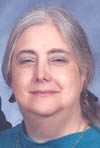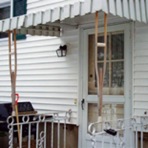Your data shows significant night-to-night variation--- regarding residual PB. And both gradual variation and disruptive SDB episodes are not uncommon for some people with CompSAS.Mr Capers wrote: I'm pretty sure I posted a night pretty close to the edge of the distribution.
CompSAS symptoms can be more of a long-trend moving target for PAP therapy to address than vanilla OSA. And that longitudinal variability is part of what can make CompSAS more difficult to treat. However, because CompSAS most often entails initial maladaptation to the machine---followed by at least some degree of long-term acclimation to that same machine---longitudinal or extended data trends in response to the machine are probably important. Those long-term data trends regarding CompSAS flareups and gradual moving trends are arguably more important than any single night of data IMO.
I never met my sleep doctor. And that may be because my very ordinary OSA and immediate successful CPAP results didn't leave much to discuss. However, my GP is an internist, and he has always been willing to discuss anything and everything about sleep or CPAP that I have ever placed on the table---including data. That cold response you received from your clinicians when trying to discuss your machine data is without question one of the most commonly reported anecdotes on this and other apnea message boards.Mr Capers wrote: When I ask about seeing and reviewing data, why do they act as if I were a cigar smoking, parasol carrying dog? Does your sleep Dr discuss your data with you?
Well, once again your doctor blatantly ignored manufacturer recommendations for properly setting up patients on the BiPAP autoSV machine:Mr Capers wrote: Titration then happens when you get a data-capable CPAP, take it home, and sleep with it for a week. Upon your return to the sleep dept. they download the data, set your prescription, and you are on your way. Since my titration was with the wrong machine, straight CPAP, my AHI went from a sleep study # of 35 to only 30.
How the sleep Dr knew enough to set my prescription to IPAP Max 20, Min 5, EPAP 5, Backup Rate: Auto, I don't know.
http://bipapautosv.respironics.com/faq.aspx
That important preliminary PSG objective, according to Respironics, is to find out exactly how much EPAP pressure is required to address the entire obstructive component. The BiPAP autoSV's obstructive-addressing EPAP pressure would be the same as CPAP pressure. But the key is that the respiratory effort belts employed in the PSG are required to differentiate the obstructive apneas and hypopneas from the central apneas and hypopneas. Your autoSV machine's EPAP setting is intended to address the obstructive event types according to Respironics. The central component of CompSAS will then be addressed by the machine's varying IPAP peak and an appropriate backup rate coupled with I time.Respironcs FAQ wrote:Question- Will the patient require an in-lab sleep study with our BiPAP autoSV in order to be placed on the device at home?
Answer- Yes. To treat the complexity of this patients as well as establish a baseline CPAP or BiPAP pressure for OSA, an in lab titration is necessary.
But if an initial PSG successfully differentiated all obstructive events from central events---and determined the correct pressure to address that obstructive CompSAS component---then a followup PSG titration on the autoSV is not necessary according to Respironics:
However, your doctor once again blatantly ignores the Respironics recommendation by not bothering to look at your machine's data after 7-10 days to see if you still have outstanding CompSAS events requiring follow-up attention.Respironcs FAQ wrote:Question- Can an identified candidate w/ Complicated Breathing Patterns, Central, and/or Mixed Apneas or Periodic Breathing (CSR), be put on the device w/o coming into the sleep lab?
Answer- If the CPAP or BiPAP pressure is already determined in lab, the patient can be put directly on BiPAPautoSV. To assure that the patient is being properly treated it is a good idea to download the SmartCard data after 7-10 days.
So in summary, for lack of that manufacturer-recommended PSG and followup SmartCard data, your doctor has absolutely no way of knowing: 1) if your outstanding hypopneas happen to be obstructive instead of central (possibly warranting increased EPAP and/or I rate adjustment), 2) that you currently have outstanding CompSAS events despite a best guess at autoSV settings, and 3) whether that PSG-lacking best guess amazingly lucked out as optimal autoSV settings---or just so happens to be suboptimal.
Did I mention that if it were me I would start shopping for a different in-network sleep doctor right about now?












